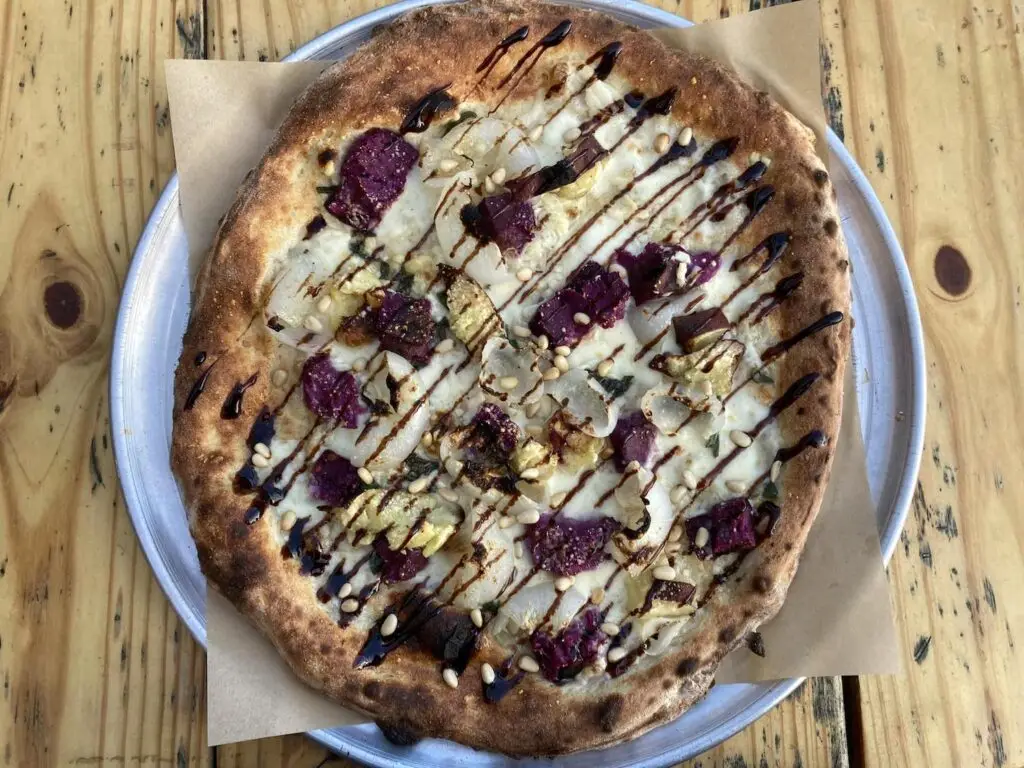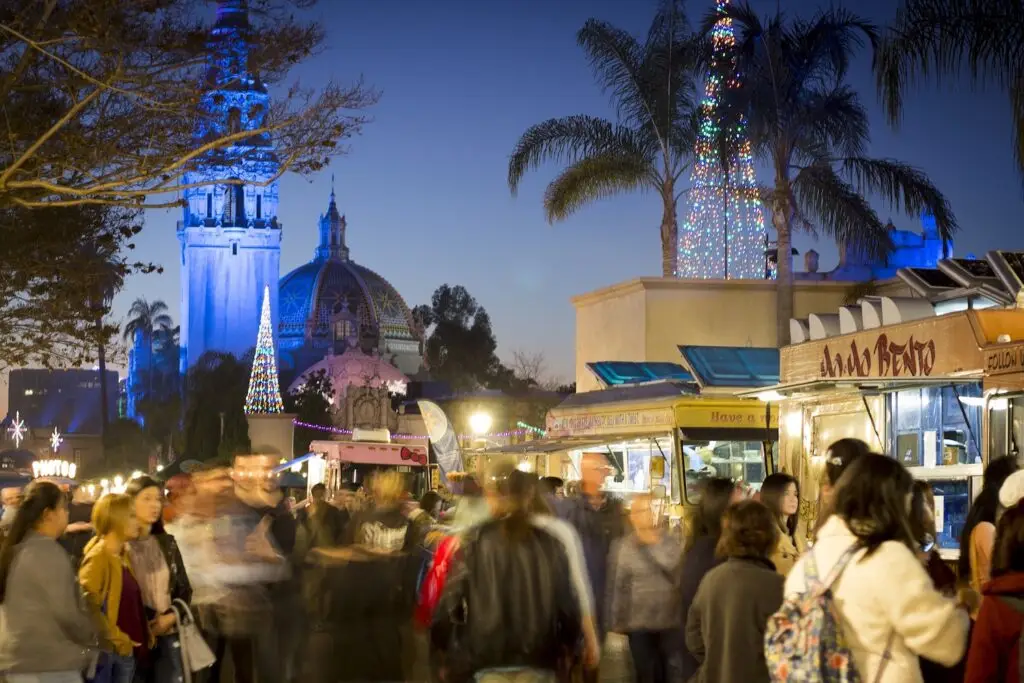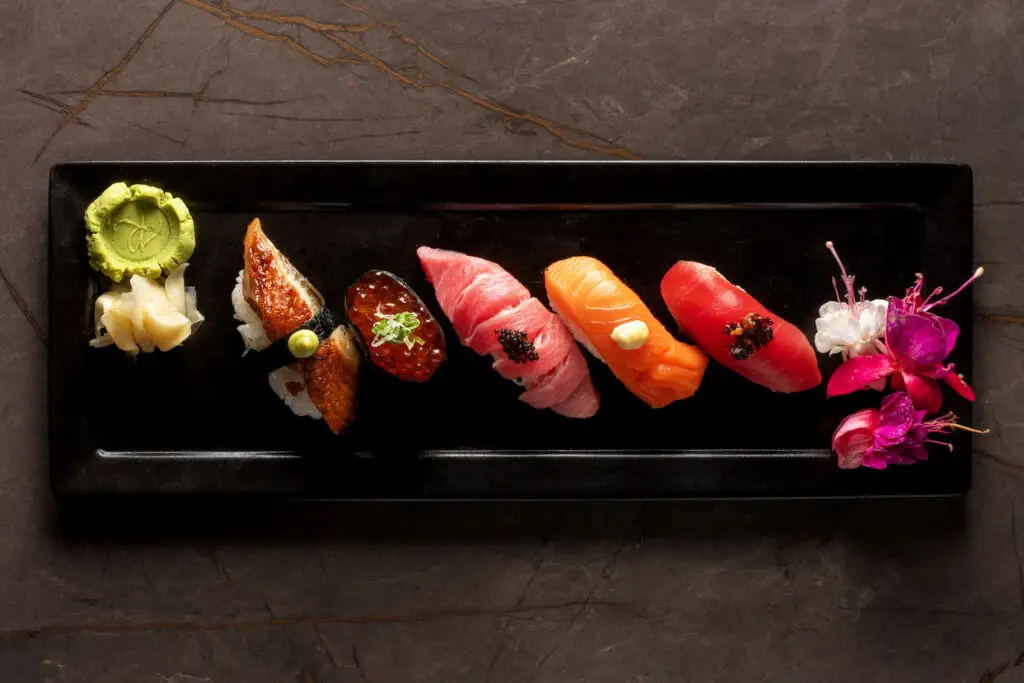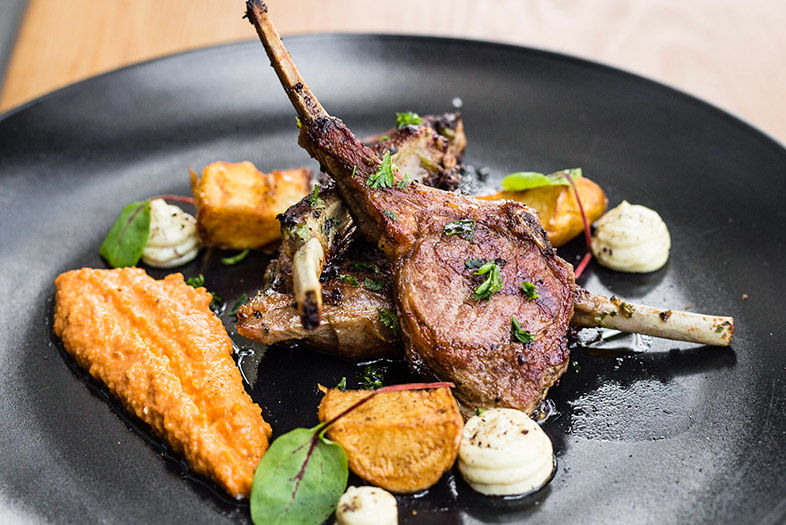The deepest, most abiding love comes for things you didn’t expect to love—whether music, people, restaurants, or whatever. Some of my favorite restaurants snuck up on me, not clamoring for attention, and then, one day, became terribly attractive. Some of my favorites are glorified cubbyholes, short on pomp and little circumstance to speak of. Restaurants without flashy design or a chef from my favorite TV show. Places with just a few seats that somehow, through sheer will and a couple standout dishes, charm your pants off.
In that way, Bar Bodega in Little Italy is inspiring. Just a little box in a bustling part of town that charms pants. Owner Marci Flaster partnered with Ken Karlan and, hiring on Tijuana-trained chef David Lopez Gutierrez (ex-Comun), transformed the former home of The Cheese Store into this unassuming Spanish tapas bar.
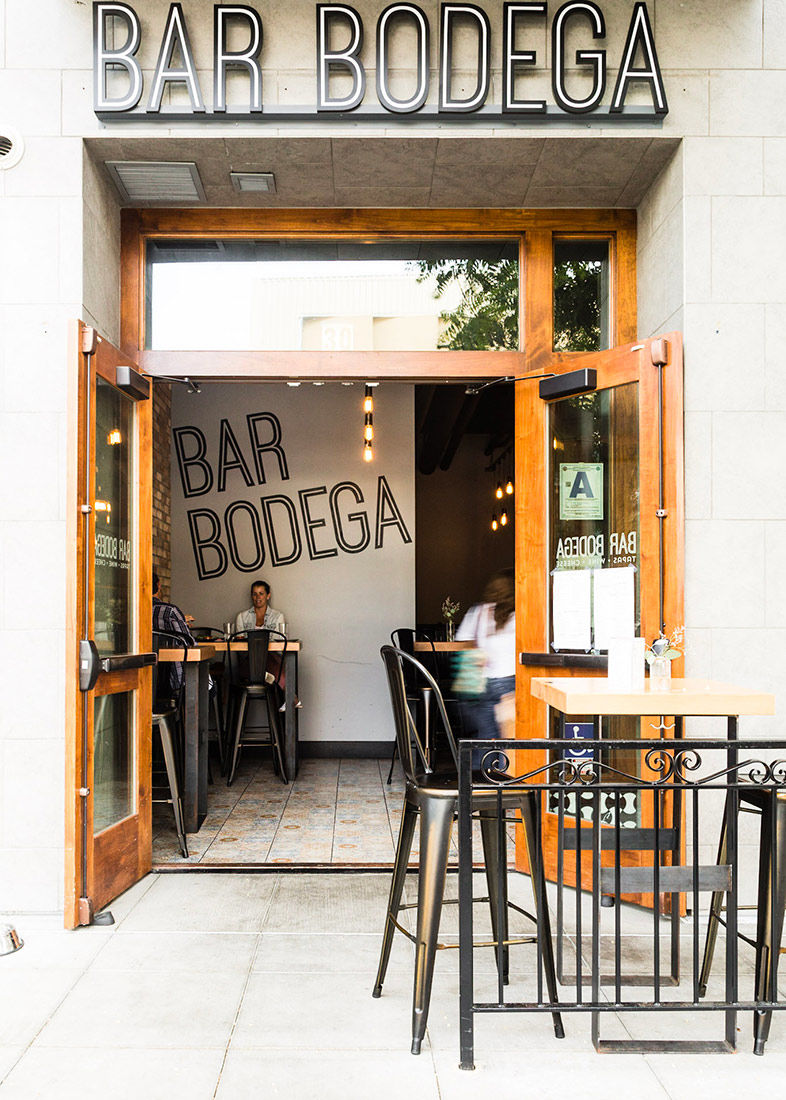
Bar Bodega Brings Tapas Culture to Little Italy
Tapas is to Spain (specifically, Andalusia) what road rage is to America—a deeply ingrained tradition and part of daily life. It’s not necessarily a food, but a way of socializing through food. The word translates into “cover” or “lid,” referring to the old Spanish practice of covering your drink (usually sherry) with a canape or slice of serrano ham to keep the dust and bugs from spelunking into your few ounces of pleasure.
Depending on which creation story you buy, tapas were either small snacks designed to temper your alcoholic aspirations, or they were gratis tokens of appreciation for buying a drink. Either way, alcohol is always part of the tapas experience. That’s good for Flaster, since good wine is easier to sell than good cheese, no matter how much we claim to love the latter. Tapas are often intentionally salty, meant to goose your thirst for another round.
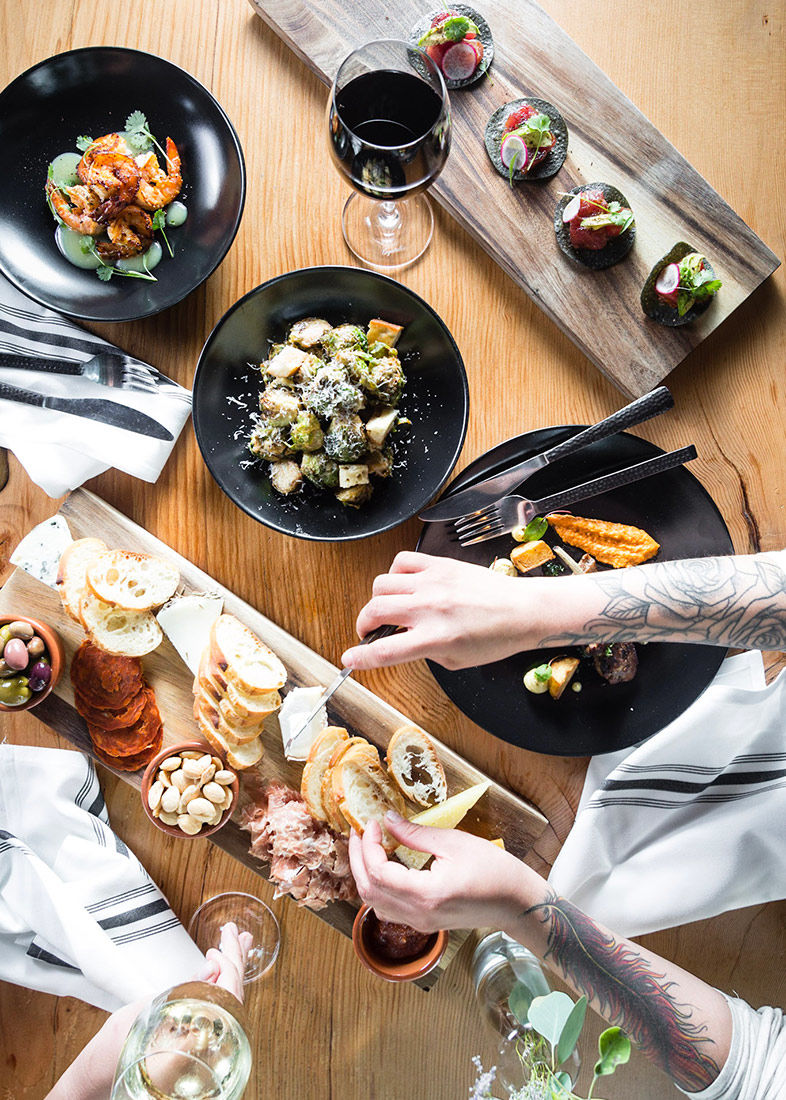
Bar Bodega Brings Tapas Culture to Little Italy
Clockwise from top left: Gambas al ajillo, ahi tuna tostada, New Zealand lamb chops, charcuterie, and roasted Brussels sprouts
Since the last meal in Spain doesn’t usually arrive until obscenely late (9–11 p.m.), tapas fill those long hours between the work bell and the dinner bell. Americans often struggle with this concept of snack-sized restaurant food. We evaluate a kitchen’s success on sheer tonnage.
But tapas are the way the world should eat—small, varied bites of this and that, nibbling our way to a more reasonable and less bloated state of satiation.
Bodega doesn’t serve tapas as much as they serve raciónes—larger portions that can be considered light meals.
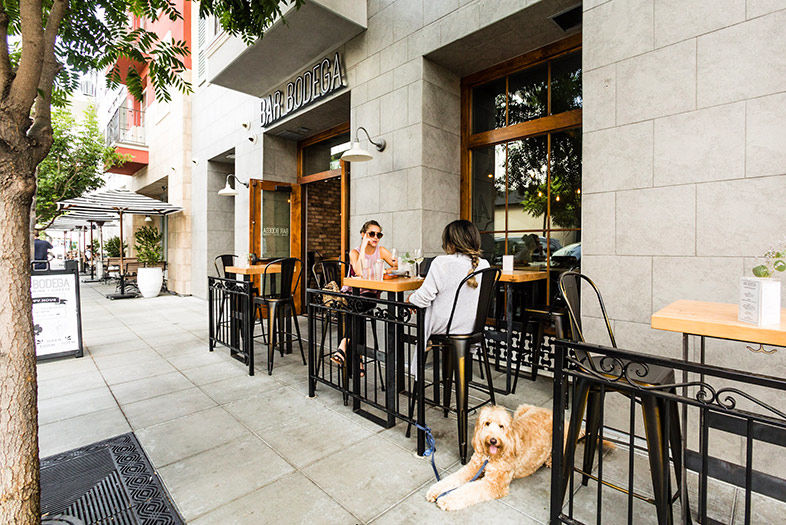
Bar Bodega Brings Tapas Culture to Little Italy
Any tapas bar without olives is criminal, and Bodega has Spanish olives as a side along with roasted marcona almonds (sweeter than California’s nuts, astonishingly). Flaster’s experience as a cheesemonger comes through with her Spanish options: Leonora, an ashen goat’s milk from León, Spain; Mahón, Spain’s second favorite cow’s milk behind Manchego; Cabra Romero, a soft, brined goat from Murcia spackled with rosemary; Pata Cabra, a tangy, crumbly, almost pleasantly sour goat; Idiazábal, an unpasteurized Basque sheep’s milk; Tres Leches (creamy cow’s milk, tangy goat, and sweet sheep’s milk); Manchego, the legendary caramel, almost-lamb-choppy prize of La Mancha; and Mitibleu, a rare, phenomenal sheep’s milk blue cheese.
There are two dishes of Gutierrez’s that repeatedly, consistently wow. The first is the ahi tuna tostada plate, with six blue maize chips topped with avocado puree, green onion, morita ash, radish, and chive and chili oil. It’s a dish that you’ve seen 1,000 times—the “Stairway to Heaven” of San Diego food—which makes it even more impressive here. The crunchy chip, fresh tuna meat, nature-fat of the avocado, the sweet ashen char, and the spike of chili oil. The second is his lamb chops, simply prepared with romesco, cilantro-lime aioli, and dill. The beauty in traditional tapas is simplicity, and the lamb chops prove simple doesn’t mean boring. Also simple, and excellent, is the toast with serrano ham (Spain’s famous cured, diaphanously sliced pork). The toast is crisp-soft, topped with a generous layer of thick tomato sauce, garlic, olive oil, and sea salt. It’s essentially cold pizza, delicious, hold the cheese.
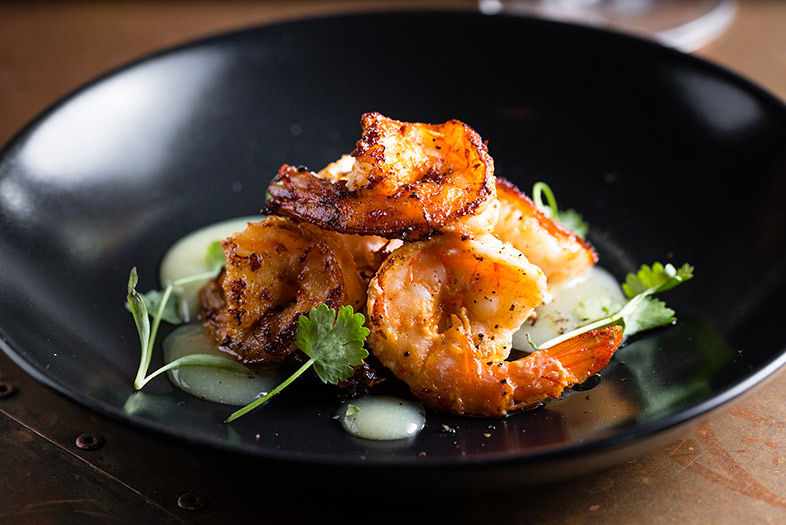
Bar Bodega Brings Tapas Culture to Little Italy
Gambas al ajillo with lemon curd, paprika oil, chili flakes, and microgreens
For his cold tomato soup (he calls it a gazpacho, but it’s thinner, closer to a consommé or broth), Gutierrez streaks goat cheese and heirloom tomatoes at the bottom of the bowl, and the soup is poured over tableside. The goat cheese pops through the sunny, bright, flavorful soup much in the same way sour cream penetrates borscht. His Brussels sprouts are nothing groundbreaking—roasted, tossed with Caesar dressing, and topped with Parm-Reg—but you’d have to be a hardened, sour shell of a person to snub well-cooked sprouts in a garlic cream.
The house special is gambas al ajillo, and it takes a little getting used to. Sautéed shrimp are served with paprika oil, chili flake, microgreens, and—ready?—lemon curd. The curd makes it sweet, a little alien. But spend some time with the dish and you’ll be rewarded.
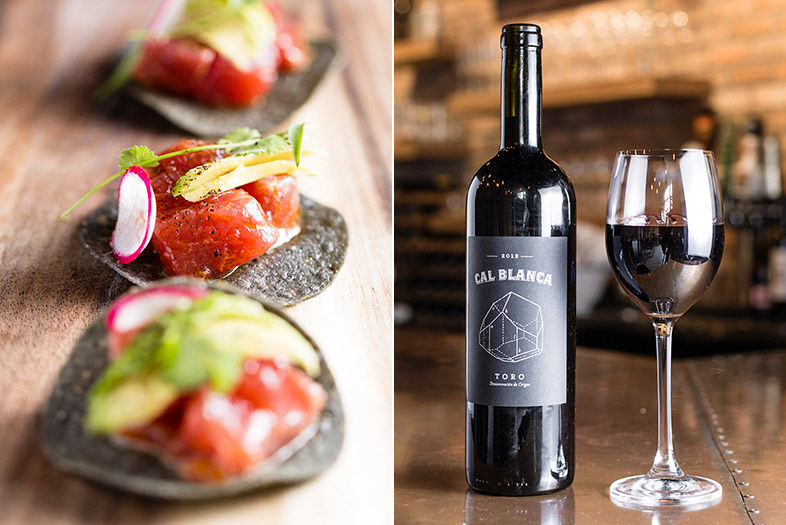
Bar Bodega Brings Tapas Culture to Little Italy
Left: Ahi tuna tostada with avocado purée, morita ash, and radish; Right: A 2012 Bodegas Cal Blanca Toro, a tempranillo from Spain
It’s not all gold stars. The squid ink arancini are beautiful to look at—the fried risotto balls black like a disgruntled teen’s eye shadow—but the sauces lack acidity and punch to offset the fried, starch-creamed rice. Unexpectedly, the least impressive dish is the carnitas confit tacos, mostly because the kitchen forgot to include the habanero-pickled red onions. The fatty little pork of carnitas always needs an acidic jolt.
At the bar—did I mention alcohol is essential to the tapas experience?—are thoughtful Spanish wines.
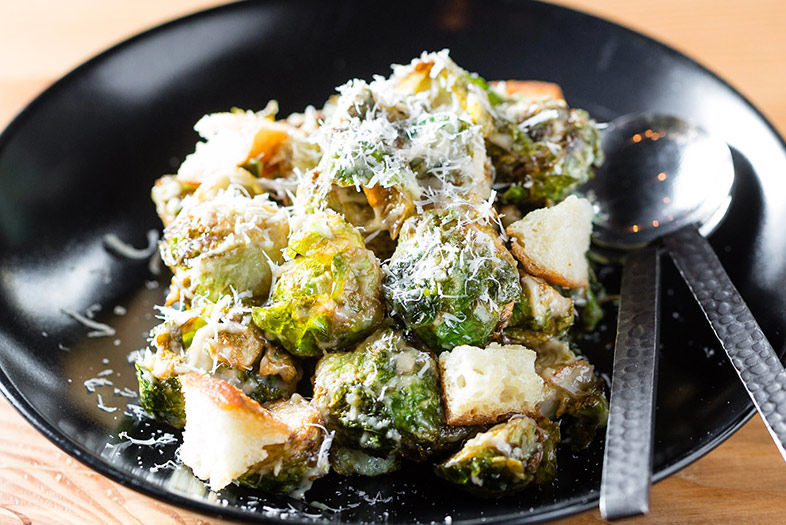
Bar Bodega Brings Tapas Culture to Little Italy
Roasted Brussels sprouts with Caesar dressing and Parmigiano-Reggiano
Open for lunch and dinner, Bodega has a bipolar personality. When the sun is out and the small patio is beckoning, it’s a calm little oasis from the bustle of Little Italy. At night, it’s candlelit and, when packed, lives up to the tapas tradition of being holy-hell loud. Although joyful conversation is one of my favorite night noises, voices bounce off the brick walls and Spanish tiles to make conversation a challenge, if not a feat. A soft surface or two might help ease the din.
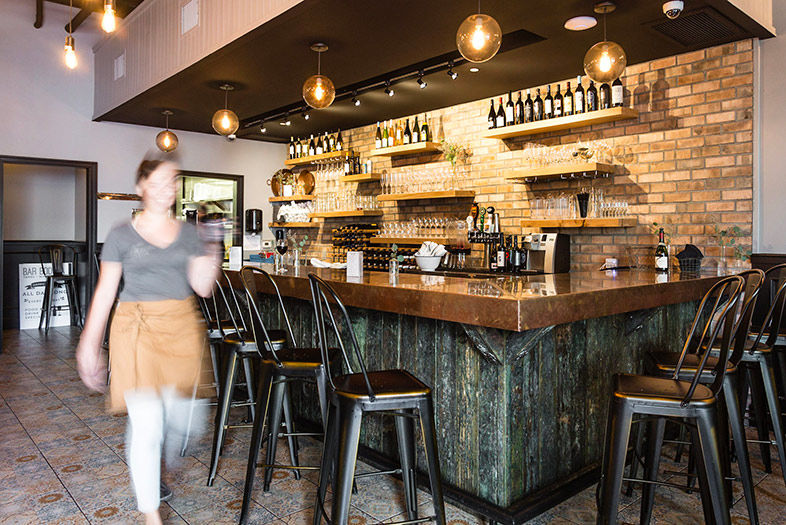
Bar Bodega Brings Tapas Culture to Little Italy
Service has never been a tapas endeavor. In Spain, you often serve yourself or someone will thud dishes on your table without a word. But Bodega’s servers are friendly and warm, and the owner often mixes with guests. Speed is not a specialty of the Bodega kitchen, and that’s fine. You’re there to drink, and the food will come when it comes.
Although restaurants throw the word tapas around, very few in town are doing them right. And this charming hiccup of a restaurant, while not perfect and not hyped, is doing them very, very well.
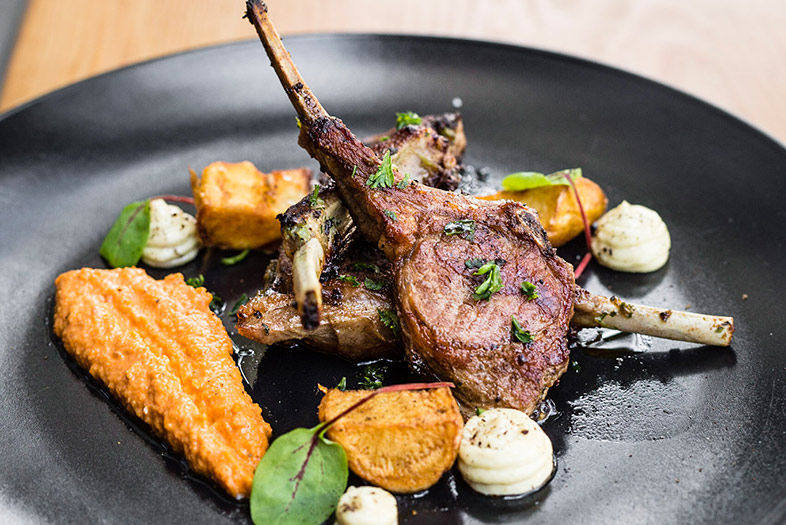
Bar Bodega Brings Tapas Culture to Little Italy
PARTNER CONTENT
New Zealand lamb chops with romesco, cilantro lime aioli, and dill
